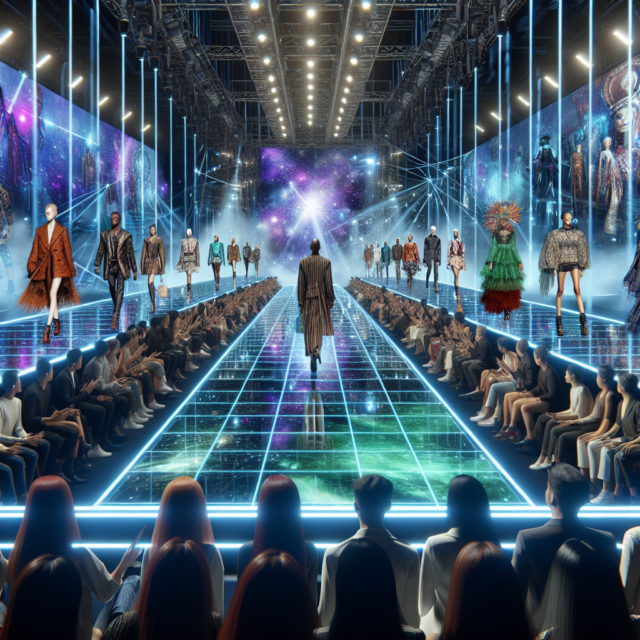Exploring the World of Digital Design Creators
Exploring the World of Digital Design Creators
In the evolving landscape of creativity and technology, digital design has emerged as a pivotal force, shaping the way we interact with the world. From stunning visuals that captivate audiences to intuitive interfaces that enhance user experiences, digital design creators are at the forefront of this transformation. This article delves into the multifaceted world of digital design, exploring the landscape, the tools that empower creators, and the challenges they navigate in their creative journeys.
Unveiling the Digital Design Landscape
The digital design landscape is a vast and dynamic realm that encompasses a myriad of disciplines, including graphic design, web design, UX/UI design, motion graphics, and more. Each discipline plays a unique role in crafting the digital experiences we encounter daily. Graphic designers focus on creating eye-catching visuals for branding and marketing, while web designers build the interactive platforms that host these visuals. UX/UI designers, on the other hand, ensure that users have a seamless and enjoyable experience when interacting with digital products.
With the rapid advancement of technology, the digital design landscape has become increasingly complex and interconnected. Designers are no longer confined to traditional static images or print media; instead, they are exploring a world where animation, interactivity, and user engagement are paramount. This shift has led to the emergence of new design paradigms and techniques, such as responsive design, which adapts content to different devices and screen sizes, and immersive design, which creates engaging, interactive environments.
The rise of social media and digital marketing has further expanded the scope of digital design. Today, designers must create content that not only captures attention but also communicates effectively across various platforms. This requires a deep understanding of audience behavior and preferences, as well as the ability to adapt designs to different formats and mediums. As a result, digital designers are increasingly wearing multiple hats, blending creativity with strategic thinking to deliver impactful designs.
Collaboration is another hallmark of the digital design landscape. Designers often work in multidisciplinary teams, collaborating with developers, marketers, and content creators to bring their visions to life. This collaborative approach not only enhances the quality of the final product but also fosters innovation and creativity. By leveraging the diverse skills and perspectives of team members, digital designers can push the boundaries of what is possible and create truly innovative designs.
The global nature of the digital design landscape also presents unique opportunities and challenges. Designers can now work with clients and teams from around the world, bringing diverse cultural influences into their work. However, this also requires an understanding of different cultural contexts and design sensibilities, as well as the ability to communicate effectively across language barriers. As digital design continues to evolve, the ability to navigate this global landscape will be a crucial skill for modern creators.
In summary, the digital design landscape is a vibrant and ever-changing field that offers endless possibilities for creativity and innovation. From the integration of new technologies to the emergence of global design trends, digital designers are constantly pushing the boundaries of what is possible. As we continue to embrace the digital age, the role of digital design creators will only become more vital in shaping the way we experience the world.
The Tools Empowering Modern Creators
In the realm of digital design, the tools and technologies available to creators have evolved significantly, providing them with unprecedented capabilities to bring their visions to life. One of the most fundamental tools in a designer’s arsenal is graphic design software. Programs like Adobe Photoshop, Illustrator, and InDesign have long been industry standards, offering a wide range of features for creating and editing images, illustrations, and layouts. These tools allow designers to experiment with different styles, colors, and compositions, enabling them to craft visually stunning designs.
Beyond traditional graphic design software, modern creators have access to a plethora of specialized tools tailored to specific design needs. For instance, Sketch and Figma have gained popularity among UX/UI designers for their ability to create interactive prototypes and collaborate in real-time with team members. These tools streamline the design process, making it easier for designers to iterate and refine their work based on user feedback and testing.
The rise of digital design has also been fueled by advancements in hardware technology. High-performance computers and tablets, such as the Apple iPad Pro and Microsoft Surface, provide designers with the power and flexibility to work on complex projects with ease. These devices, often equipped with stylus pens, offer a more intuitive and natural way for designers to sketch and create digital artwork, bridging the gap between traditional and digital media.
Cloud-based services and storage solutions have further revolutionized the way digital designers work. Platforms like Adobe Creative Cloud and Google Drive enable designers to access their work from anywhere, collaborate with team members in real-time, and ensure that their files are securely backed up. This level of accessibility and convenience has empowered designers to work more efficiently and flexibly, adapting to the demands of an increasingly interconnected world.
In addition to software and hardware advancements, the rise of online resources and communities has played a crucial role in empowering modern creators. Online platforms such as Behance, Dribbble, and Pinterest serve as valuable sources of inspiration, allowing designers to share their work, discover new trends, and connect with other creatives. These platforms foster a sense of community and collaboration, encouraging designers to learn from each other and grow their skills.
Finally, the integration of artificial intelligence (AI) and machine learning in design tools is opening new doors for creativity and innovation. AI-powered features, such as content-aware fill and automatic layout suggestions, help designers save time and enhance their workflow. As AI technology continues to advance, it is likely that we will see even more sophisticated tools that assist designers in generating ideas, optimizing designs, and personalizing user experiences.
Navigating Challenges in Digital Design
Despite the abundance of tools and resources available to digital designers, the journey to creating exceptional designs is not without its challenges. One of the primary hurdles faced by designers is the ever-evolving nature of technology and design trends. With new tools, platforms, and design paradigms emerging at a rapid pace, designers must continuously update their skills and knowledge to stay relevant in the industry. This requires a commitment to lifelong learning and adaptability, as well as the ability to quickly grasp and implement new concepts.
Another significant challenge in digital design is the need to balance creativity with functionality. While designers strive to create visually appealing and innovative designs, they must also ensure that their creations are practical and user-friendly. This involves understanding the needs and preferences of the target audience, as well as considering factors such as accessibility, usability, and performance. Striking the right balance between aesthetics and functionality is crucial for delivering designs that resonate with users and achieve the desired impact.
The digital design landscape is also characterized by intense competition, with designers from around the world vying for attention and recognition. This competitive environment can be both motivating and daunting, pushing designers to continually improve their skills and showcase their unique style. However, it can also lead to creative burnout, as designers feel the pressure to constantly produce new and original work. Finding ways to manage stress and maintain a healthy work-life balance is essential for sustaining creativity and passion in the long run.
Collaboration, while beneficial, can also present challenges for digital designers. Working with diverse teams and stakeholders often requires effective communication and negotiation skills, as well as the ability to navigate differing opinions and expectations. Designers must be adept at articulating their vision and rationale, while also being open to feedback and compromise. Building strong relationships and fostering a collaborative environment can help designers overcome these challenges and achieve successful outcomes.
Furthermore, the issue of intellectual property and copyright infringement is a persistent challenge in the digital design world. With the ease of sharing and distributing digital content online, designers face the risk of having their work copied or used without permission. Protecting intellectual property rights and ensuring proper attribution can be complex, requiring designers to be vigilant and informed about legal matters. This underscores the importance of understanding copyright laws and using appropriate licensing agreements to safeguard creative work.
Lastly, the increasing emphasis on sustainability and ethical design practices presents both opportunities and challenges for digital designers. As consumers become more conscious of environmental and social issues, designers are expected to create designs that are not only visually appealing but also sustainable and socially responsible. This involves considering the environmental impact of design choices, as well as promoting inclusivity and diversity in design. Embracing these principles can help designers create meaningful and impactful work that resonates with a broader audience.
The world of digital design creators is a dynamic and ever-evolving landscape that offers both exciting opportunities and formidable challenges. As technology continues to advance, designers are empowered with powerful tools and resources that unlock new creative possibilities. However, navigating the complexities of this landscape requires adaptability, collaboration, and a commitment to ethical and sustainable practices. By embracing these principles, digital design creators can continue to push the boundaries of innovation and shape the future of design in a meaningful way.





















